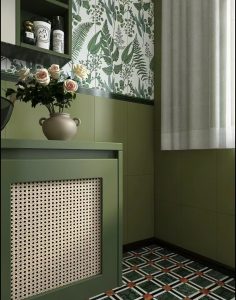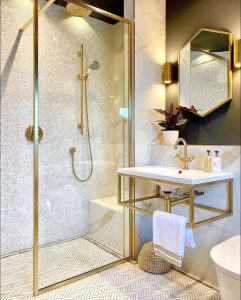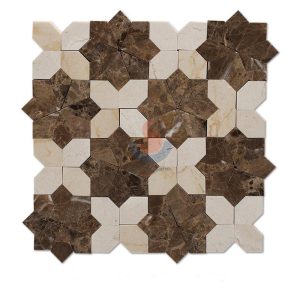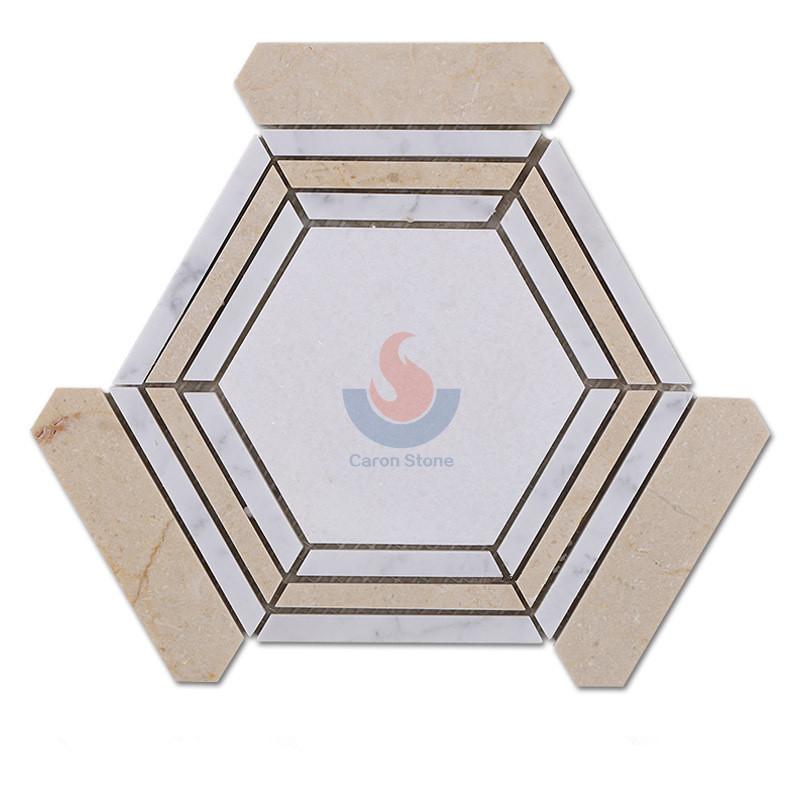In the vast universe of architectural decoration, marble mosaics have always occupied a favorite place among designers with their unique texture and timeless aesthetic charm. With its endurance and variation, it not only gives the area a traditional and elegant appearance but also satisfies the double search of beauty and usefulness in modern décor. But as material science and building technology advance quickly, conventional building techniques are presenting hitherto unheard-of possibilities and problems. This article will deeply explore the construction process of marble mosaics, from the traditional paving technology with a long history to the modern innovative practice that leads the trend, and gradually reveal how to improve the decorative effect and structural strength of mosaics through technological innovation. We not only examine the benefits and drawbacks of conventional building techniques but also provide a number of creative and pragmatic enhancement ideas for the new difficulties in modern construction.

Bathroom decorated with marble mosaic tiles
I. Characteristics, installation, reinforcement and decorative effects of traditional marble mosaics
(I) Characteristics of traditional marble mosaics
Usually formed of kaolin and baked at high temperatures, traditional marble mosaics produce little square or hexagonal ceramic particles. These particles are of uniform thickness, mainly black and white in color, wear-resistant and acid-resistant, and are usually used for floor decoration in bathrooms or steps.
(II) Installation and reinforcement of traditional marble mosaics
Traditional marble mosaics are fixed to the surface of the component with kraft paper and glue, and then installed. The whole impression depends on the flatness and sealing during installation. By filling in the voids with cement slurry and patting it down, one may guarantee strong ground bonding of the marble mosaic particles.
(III) Decorative effect
The marble mosaic floors in old buildings usually show a high degree of flatness, uniformity of gaps and overall firmness, thanks to traditional construction techniques.
II. Characteristics and installation status of modern marble mosaics
(I) Characteristics of small-grain marble mosaics
Modern 1 cm marble mosaics include various flaws in thickness, gaps, and back mesh processing, which influences the decorative effect and structural strength even although their visual impact depends on higher standards.
(II) Installation status
The modern paving process is similar to the traditional process, but due to the insufficient adhesion between the back mesh and the base layer, the strength and decorative effect of the marble mosaic after installation are not ideal. Particularly the 1 cm small-grain marble mosaics are prone to threshing and poor ornamental effects and difficult to fill and reinforce.

Marble mosaic bathroom corner
III. Suggestions for improving the construction method of ground marble mosaics
(I) Improve the paving process
The following actions should constitute part of the paving process improvement:
Use a foundation slurry with glue to provide enough base slurry thickness and adherence.
Treat the gaps closed by the back mesh to ensure that the base slurry can squeeze into the gaps.
Apply an interface agent to the back mesh of the component to enhance adhesion.
(II) Overall grouting reinforcement
The key to overall grouting reinforcement is to use appropriate grouting materials and correct construction methods. Although liquid glue has very great permeability and bonding strength, practical construction need pay attention to the following:
1. Control of colloid dilution: The dilution of liquid glue directly affects its permeability and strength after curing. Consequently, small-scale experiments should help to ascertain the ideal dilution ratio before building.
2. Control of curing time: The curing time of liquid glue needs to be adjusted according to the temperature and humidity of the construction environment to ensure that the colloid can fully penetrate into each gap during the curing process.
3. Consideration of shrinkage: Construction workers should fairly choose colloids depending on experience to avoid inadequate strength or uneven surface caused by shrinkage as liquid glue may shrink to a certain level during the curing process.
4. Multiple grouting and polishing: Multiple grouting could be needed to guarantee that every gap is completely filled when building over a big region. Once the colloid is cured and following every grouting, it should be polished once to guarantee a smooth surface.
(III) Flatness grinding and polishing
The irregular particle thickness could influence the surface’s flatness once the grouting reinforcement is finished. Consequently, one has to do general flatness grinding and re-polishing. The particular activities consist in follows:
1. Rough grinding: Use a coarse grinding wheel for preliminary grinding, the main purpose is to grind all protruding particles flat so that the entire floor reaches a basic flat state.
2. Fine grinding: Next, use a fine grinding wheel for further grinding to make the surface smoother and reduce the scratches left by rough grinding.
3. Polishing: Finally, use a polishing machine to polish the surface to restore the floor to its original gloss. This procedure can improve floor wear resistance and anti-fouling capacity in addition to enhancing the decorative impact.
Through the above three processes of improved paving method, overall grouting reinforcement and flatness grinding and polishing, the construction quality of marble mosaic floor can be significantly improved to ensure its good strength and aesthetic effect.

Black and white marble with brass fan design mosaic tile
Although the traditional marble mosaic paving method is simple in process, it has been tested over time and proved to have obvious advantages in strength and beauty. However, with the development of materials and construction technology, especially when using marble as the base material of marble mosaic, traditional methods can no longer fully meet the high standards of modern decoration. Therefore, combining modern construction materials and technologies, and making appropriate improvements to traditional processes can effectively improve the quality and decorative effect of marble mosaic floors. Many issues in the present marble mosaic construction can be resolved by using three processes: namely strengthening the bonding between the base slurry and components, overall grouting reinforcement, and flatness grinding and polishing, so offering a more durable and beautiful solution for architectural decoration.
People also search for:
Why do marble mosaic tiles need to be sealed?
You may ask, why bother to seal marble mosaic tiles? To put it bluntly, marble is a natural stone. Although it is hard, it has many pores on its surface and is highly absorbent. Especially for tiles like mosaics that are made up of small pieces, the gaps between the joints are easy for dirt to hide. Humid environments such as kitchens and bathrooms are their “Waterloo”. Water stains and oil stains will penetrate through these small pores. Over time, the tiles will become dull and may even mold and discolor. Therefore, sealing marble mosaic tiles is a key step to prevent these problems. In this article “Save the tiles! A step-by-step guide to sealing marble mosaics“, I will share my experience in sealing.





